In recent years, the conversion of crop structure has initially brought positive results, improving land use efficiency, economic efficiency in agricultural production, helping farmers get rich right on their own fields and gardens. This is also an inevitable requirement, contributing to the effective implementation of the project to restructure the agricultural sector towards increasing added value and sustainable development.
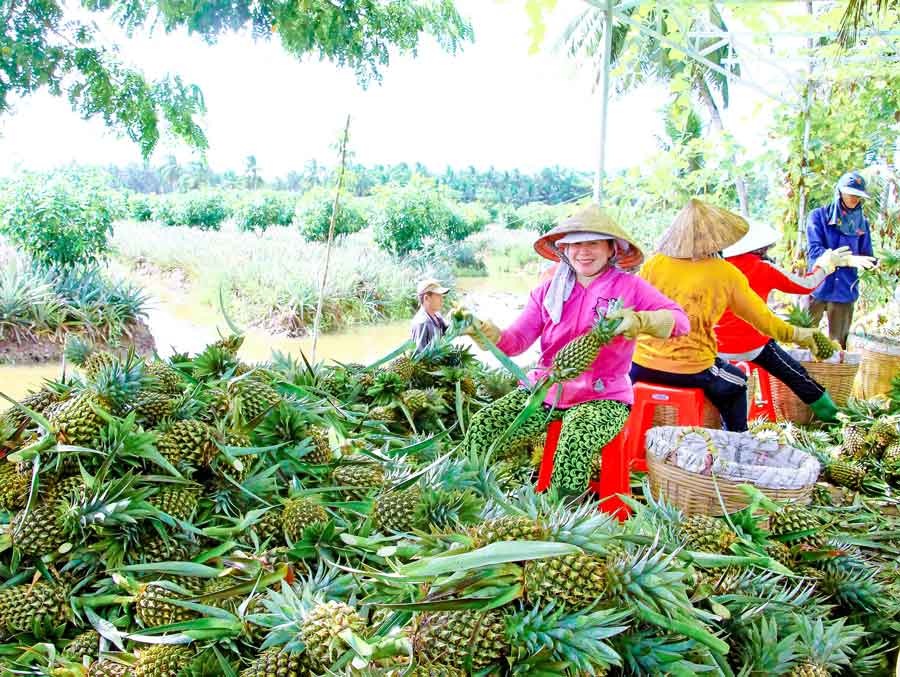 |
| Many effective production models help people increase their income. |
Get rich by changing crops
By boldly changing the crop structure to suit the soil and local production conditions, farmers have increased production efficiency, reduced investment costs, reduced pests and diseases, and improved the environmental ecosystem. In some areas where rice production is ineffective, often at risk, with no initiative in irrigation water and low productivity, farmers have also changed the crop structure to suit. Accordingly, many models have achieved high economic efficiency and are being replicated.
From a low-lying swampy land, thanks to boldly converting from low-yield rice-growing land, Bung Sam has "changed its skin" into a highly efficient pineapple field. Converting 10 hectares of "more failed than successful" rice fields to pineapple growing, Ms. Tran Thi Phuong Du ( Hoa Binh commune) shared: "Pineapple is planted once but can bear fruit for 4-6 consecutive years. Just need periodic care such as fertilizing and watering, can harvest 3 pineapple crops/year. Thanks to that, income is 3-4 times higher than rice growing".
As one of the localities actively implementing crop restructuring, in Tra Con commune, according to the Chairman of the Commune People's Committee - Ha Van Thanh Khuong: In recent times, the commune has developed comprehensive agriculture , diversified production; converted crop and livestock structure according to the agricultural restructuring plan.
Encourage the conversion of ineffective orange growing land to growing fruit trees that bring high economic efficiency and vegetables to contribute to increasing income. Coordinate the organization of transfer and wide application of scientific and technical advances in production and business, improving the quality of agricultural products. Thanks to that, the economic efficiency is higher.
Similarly, in Long Ho commune, many models of converting ineffective rice land to annual and perennial crops are suitable for local farming conditions and bring higher profits. Some models of converting rice land to short-term crops of farmers have signed contracts to purchase products, helping people feel secure in production with stable and higher income than conventional rice cultivation.
According to the Department of Agriculture and Environment, in recent times, the work of planning, planning, and zoning production, especially for key areas, has been built in a timely manner, thereby creating favorable conditions for converting production in each region and each locality. Policies to support the conversion of crop structure have been issued promptly, facilitating the conversion of ineffective rice-growing land to other crops or combined with aquaculture.
Mr. Lam Van Tan - Director of the Department of Agriculture and Environment said: The conversion from rice land to annual crops, perennial crops combined with aquaculture applying scientific and technical advances, production in the direction of safety, economic efficiency increased 2-3 times compared to before the conversion. Not only in cultivation, restructuring in the livestock sector also recorded many new steps, towards bio-safe farms, protecting the environment and increasing product value.
Promote synchronization of solutions
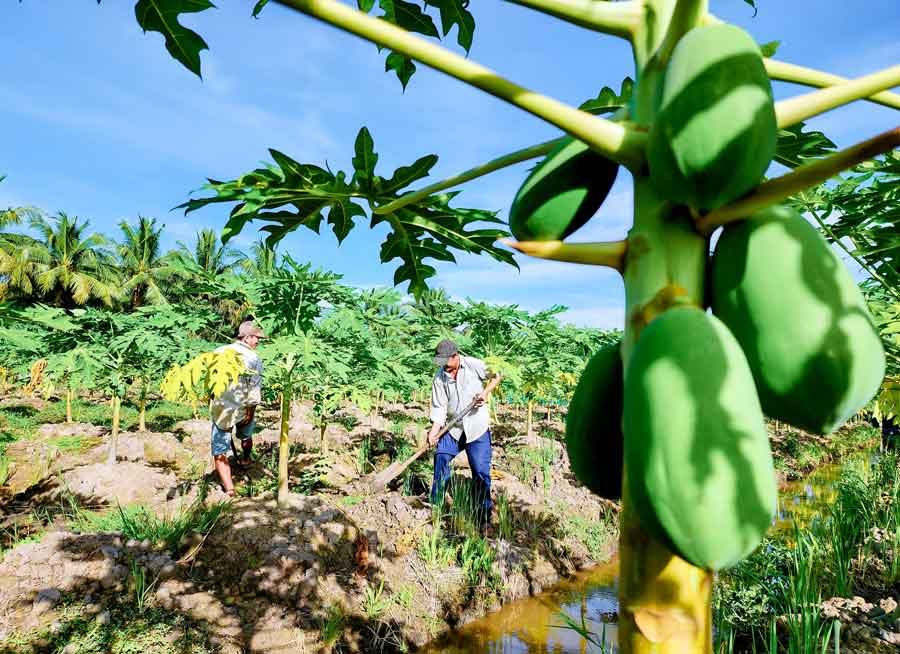 |
| Converting crop structure on ineffective rice land to other crops to adapt to climate change. |
According to the relevant authorities, to improve the efficiency of crop restructuring, it is necessary to implement synchronous solutions. Accordingly, converting short-term crops on rice land needs to be associated with seasonal solutions, crops, crop rotation formulas, and intercropping suitable for each region and farming practices to promote the potential and strengths of the locality.
At the same time, review ineffective production areas to develop a plan to convert crop structure; it is necessary to strengthen propaganda, mobilization and widely disseminate the purpose, meaning and effectiveness of converting crop structure on ineffective rice land to other crops to adapt to the current climate change situation.
In fact, the implementation of crop restructuring in the past time has encountered many difficulties. According to the Department of Agriculture and Environment, although propaganda and mobilization work has been carried out, it has not been in-depth, has not focused on the main points, and the forms of propaganda have not been diverse and rich, so many households have not boldly participated. On the other hand, production still depends a lot on the weather and the market, so farmers have not been encouraged to convert.
Unstable output of agricultural products; lack of capital; lack of labor; lack of technology; not many businesses investing and consuming products; not many investment policies supporting conversion. Linking and cooperating in production and product consumption still has many shortcomings, a few have links but they are not sustainable; most agricultural products are consumed through traders.
Inspection, examination and supervision of conversion have not been carried out regularly, focusing mainly on propaganda and reminders; the situation of spontaneous conversion of land use purposes from rice cultivation to brackish water shrimp farming and fish farming not in accordance with the planning, land use plan and local production structure conversion plan still occurs, affecting the environment and the management of rice cultivation land according to regulations.
Mr. Lam Van Tan said: In the coming time, the agricultural sector will focus on transforming the structure of crops and livestock to adapt to climate change. Encourage farmers to transform the crop structure to rotate vegetables on rice land. Develop key products with large raw material areas (coconut, citrus, ornamental flowers, seedlings). Form organic raw material areas, GAP standards and equivalent.
Strengthening agricultural and fishery extension work, applying science and technology to serve the transformation of production models suitable for climate change. Consolidating and developing farm economy, cooperatives, and production linkage organizations associated with raw material areas and consumption markets. Diversifying forms of production cooperation suitable for each region and each type of crop and livestock. Prioritizing projects on processing agricultural and aquatic products that ensure international standards, aiming for export.
In the period 2020-2025, the rice growing area is estimated to decrease by an average of 5.2%/year, vegetable growing is estimated to increase by an average of 2.2%/year, and perennial crop growing is estimated to increase by an average of 5.1%/year. The harvest value per unit of cultivated land area in 2024 will reach 415 million VND, an increase of 28% compared to 2020 (324 million VND/ha/year). It is estimated that by 2025, the harvest value per hectare of cultivated land will reach 420 million VND/ha/year; an average increase of 5.46%/year. |
Article and photos: NGUYEN KHANG
Source: https://baovinhlong.com.vn/kinh-te/nong-nghiep/202510/chuyen-doi-co-cau-cay-trong-giup-nong-dan-vuon-len-95b0c2d/


![[Photo] Prime Minister Pham Minh Chinh chairs meeting to deploy overcoming consequences of storm No. 10](https://vphoto.vietnam.vn/thumb/1200x675/vietnam/resource/IMAGE/2025/10/3/544f420dcc844463898fcbef46247d16)




![[Photo] Students of Binh Minh Primary School enjoy the full moon festival, receiving the joys of childhood](https://vphoto.vietnam.vn/thumb/1200x675/vietnam/resource/IMAGE/2025/10/3/8cf8abef22fe4471be400a818912cb85)


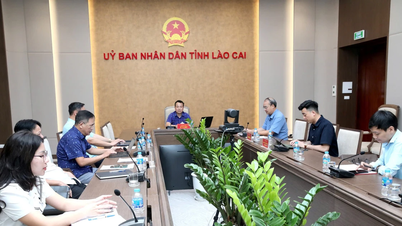

![[Infographic] What are the growth targets of Dong Nai province in the first 9 months of 2025?](https://vphoto.vietnam.vn/thumb/402x226/vietnam/resource/IMAGE/2025/10/3/45f9330556eb4c6a88b098a6624d7e5b)

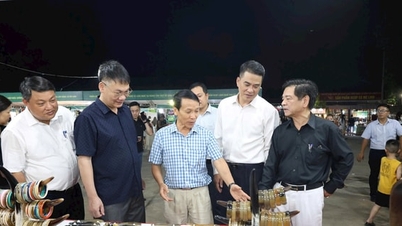



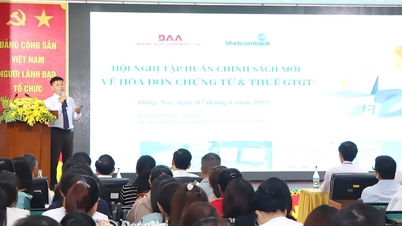




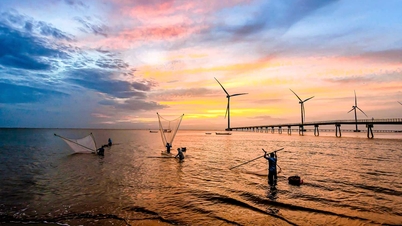
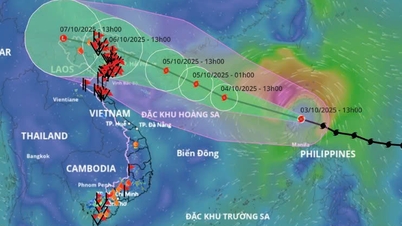
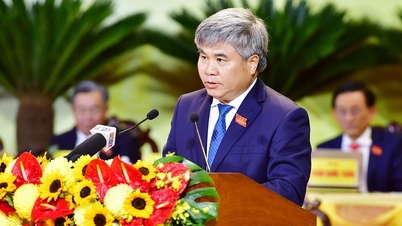
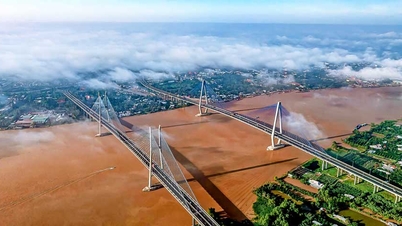
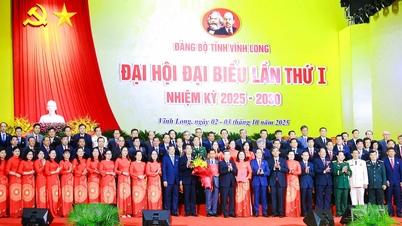
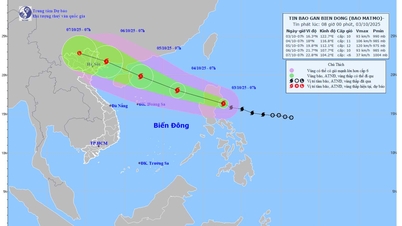



















































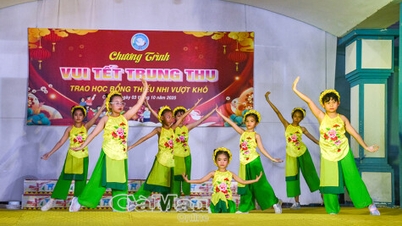
















Comment (0)